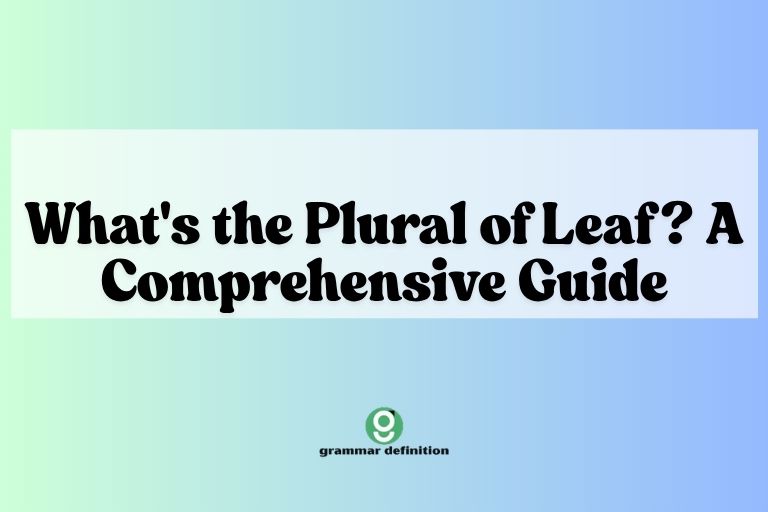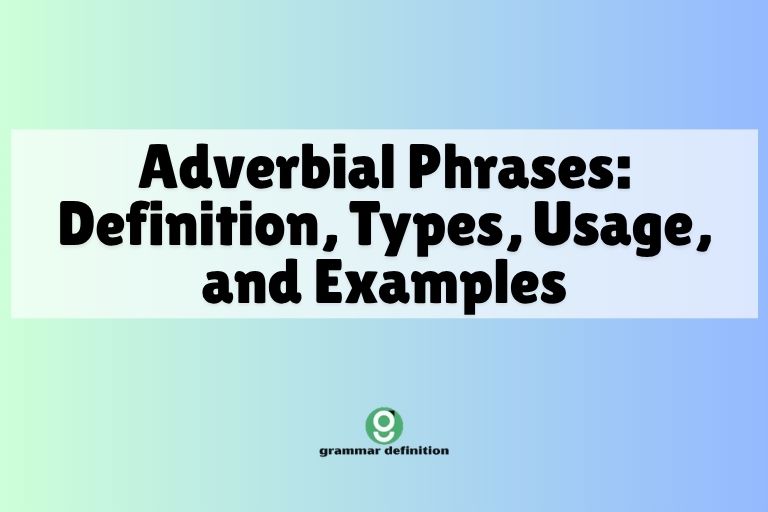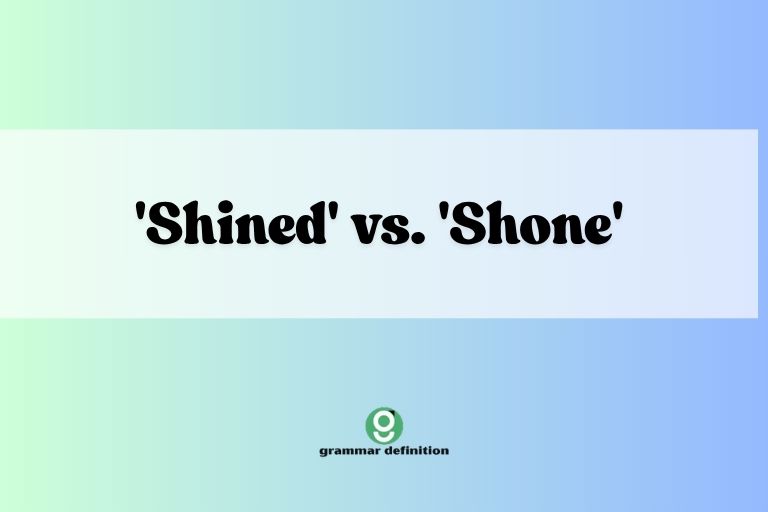What’s the Plural of Leaf? A Comprehensive Guide

Understanding how to form plurals is a fundamental aspect of English grammar. While most nouns simply add an “-s” to become plural, some words, like “leaf,” follow different rules.
Mastering these irregular plural forms is crucial for clear and accurate communication, both in writing and speech. This guide will provide a comprehensive exploration of the pluralization of “leaf,” covering its definition, usage, common mistakes, and plenty of examples to solidify your understanding.
Whether you’re an ESL learner, a student, or simply someone looking to brush up on your grammar skills, this article will equip you with the knowledge you need.
This article is designed to help anyone who wants to improve their English grammar skills, especially when it comes to forming plurals of nouns that don’t follow the standard rules. We will cover the definition of “leaf,” the rules for pluralizing it, common mistakes to avoid, and provide numerous examples and practice exercises to reinforce your learning.
Table of Contents
- Introduction
- Definition of Leaf
- Structural Breakdown: From Leaf to Leaves
- Types of Leaves
- Examples of “Leaf” and “Leaves” in Sentences
- Usage Rules for “Leaf” and “Leaves”
- Common Mistakes with “Leaf” and “Leaves”
- Practice Exercises
- Advanced Topics: Figurative Language and Idioms
- Frequently Asked Questions (FAQ)
- Conclusion
Definition of Leaf
A leaf (plural: leaves) is a flattened, typically green structure of a vascular plant, attached to a stem directly or via a petiole. Leaves are the primary sites of photosynthesis, the process by which plants convert light energy into chemical energy in the form of sugars. They also play a crucial role in transpiration, the process by which water moves through a plant and evaporates from its aerial parts, such as leaves, stems, and flowers.
In botanical terms, leaves are lateral appendages of the stem. They are characterized by their dorsiventrality, meaning they have distinct upper and lower surfaces.
The shape, size, and arrangement of leaves vary widely among different plant species, reflecting adaptations to diverse environments. Leaves can be simple, consisting of a single blade, or compound, composed of multiple leaflets.
Their arrangement on the stem, known as phyllotaxy, can be alternate, opposite, or whorled.
Beyond their biological function, leaves also hold cultural significance. They are often used as symbols of nature, growth, and renewal.
In art, literature, and folklore, leaves appear in various forms, representing themes of life, death, and transformation. The changing colors of leaves in autumn are particularly evocative, symbolizing the passage of time and the beauty of impermanence.
Structural Breakdown: From Leaf to Leaves
The pluralization of “leaf” from singular to plural involves a specific grammatical rule: changing the “f” at the end of the word to “ves.” This pattern is observed in several other English nouns that end in “f” or “fe.” Understanding why this happens requires a brief look at the historical development of the English language.
Many words that now end in “f” or “fe” used to end in a voiced fricative sound, represented by the letter “v,” in Old English. When these words were pluralized, the “v” sound remained, and an “-es” ending was added, resulting in forms like “leaves.” Over time, the spelling of the singular form changed to “f,” but the plural form retained the original “v” sound and the “-es” ending.
The general rule is: If a noun ends in “f” or “fe,” change the “f” to “v” and add “-es” to form the plural. However, it’s important to note that this rule has exceptions.
Some nouns ending in “f” simply add “-s” to form the plural, such as “chief” (chiefs) and “roof” (roofs). The best way to learn these exceptions is through memorization and practice.
Here’s a breakdown of the transformation:
- Singular: leaf
- Identify the ending: The word ends in “f.”
- Apply the rule: Change the “f” to “v” and add “-es.”
- Plural: leaves
Types of Leaves
Leaves come in a wide variety of shapes, sizes, and structures, each adapted to specific environmental conditions and plant functions. Understanding the different types of leaves can provide a richer context for using the words “leaf” and “leaves” correctly.
Simple vs. Compound Leaves
Simple leaves have a single, undivided blade. Examples include oak leaves, maple leaves, and birch leaves. The blade is attached to the stem by a petiole. In contrast, compound leaves have a blade that is divided into multiple leaflets. Examples include rose leaves, ash leaves, and walnut leaves. Each leaflet is attached to a central stalk called a rachis.
Leaf Shapes
Leaf shapes vary greatly. Some common shapes include:
- Oval: Egg-shaped, like the leaves of a magnolia tree.
- Lanceolate: Lance-shaped, long and narrow, like the leaves of a willow tree.
- Cordate: Heart-shaped, like the leaves of a linden tree.
- Palmate: Shaped like a hand with fingers, like the leaves of a maple tree.
- Linear: Long and narrow, like the leaves of a pine tree.
Leaf Arrangements
The arrangement of leaves on a stem, known as phyllotaxy, can also vary:
- Alternate: Leaves are arranged singly at different points along the stem.
- Opposite: Leaves are arranged in pairs, directly across from each other on the stem.
- Whorled: Three or more leaves are arranged in a circle around the stem.
Understanding these different types of leaves can enhance your appreciation for the diversity of the plant kingdom and improve your descriptive language when using the words “leaf” and “leaves.”
Examples of “Leaf” and “Leaves” in Sentences
To fully grasp the usage of “leaf” and “leaves,” let’s explore numerous examples in different contexts. This will help you understand how to use these words correctly in your own writing and speech.
Singular “Leaf” Examples
The following table provides examples of “leaf” used in singular form in various sentences. Pay attention to the context and how “leaf” functions as a noun in each example.
| Sentence | Context |
|---|---|
| A single leaf fell from the tree. | Describing a falling leaf. |
| The child picked up a colorful leaf. | Describing a child’s action. |
| Each leaf on the plant is vital for photosynthesis. | Explaining the function of a leaf. |
| The botanist examined the structure of the leaf under a microscope. | Describing a scientific examination. |
| I found a four-leaf clover in the field. | Describing a lucky find. |
| The artist painted a detailed picture of a single leaf. | Describing an artistic creation. |
| A caterpillar was munching on a green leaf. | Describing an insect’s activity. |
| The texture of the leaf was rough and dry. | Describing the texture of a leaf. |
| The wind rustled the leaf gently. | Describing the sound of a leaf in the wind. |
| The leaf floated serenely on the surface of the pond. | Describing a leaf’s movement on water. |
| I used a leaf as a bookmark in my novel. | Describing an unconventional use of a leaf. |
| The tiny insect camouflaged itself perfectly against the leaf. | Describing camouflage in nature. |
| The sunlight filtered through the leaf, creating dappled patterns on the ground. | Describing the effect of sunlight on a leaf. |
| She pressed the leaf between the pages of a heavy book to preserve it. | Describing the preservation of a leaf. |
| The gardener carefully pruned each leaf to encourage new growth. | Describing gardening practices. |
| The chef garnished the dish with a sprig of parsley and a single mint leaf. | Describing the garnishing of a dish. |
| The child traced the outline of the leaf on a piece of paper. | Describing a child’s drawing activity. |
| The pattern on the leaf was intricate and unique. | Describing the pattern on a leaf. |
| The leaf provided shade for the tiny mushrooms growing beneath it. | Describing the protective function of a leaf. |
| The scientist studied the veins of the leaf to understand its vascular system. | Describing a scientific study of a leaf. |
| He compared the size of the leaf to others from the same tree. | Describing a comparison of leaf sizes. |
| The leaf twirled in the air before landing softly on the ground. | Describing the movement of a falling leaf. |
| She identified the tree by examining the shape and texture of its leaf. | Describing tree identification. |
Plural “Leaves” Examples
Now, let’s examine the plural form “leaves” in various sentences. Notice how the plural form is used when referring to more than one leaf.
| Sentence | Context |
|---|---|
| The ground was covered in fallen leaves. | Describing a ground covered in leaves. |
| The children raked the leaves into a big pile. | Describing children raking leaves. |
| The leaves of the oak tree turned brown in autumn. | Describing the change in leaves during autumn. |
| The wind blew the leaves across the yard. | Describing the wind blowing leaves. |
| The gardener collected the dead leaves for compost. | Describing a gardener collecting leaves. |
| The forest floor was a carpet of colorful leaves. | Describing the forest floor. |
| We crunched through the dry leaves on our walk. | Describing the sound of walking on dry leaves. |
| The leaves provided a natural shelter for the small animals. | Describing the protective function of leaves. |
| The artist used pressed leaves to create a collage. | Describing an artistic creation. |
| The leaves rustled in the breeze, creating a soothing sound. | Describing the sound of leaves in the breeze. |
| She swept the leaves from the porch. | Describing someone sweeping leaves. |
| The rain made the leaves glisten like jewels. | Describing the effect of rain on leaves. |
| The children jumped into the pile of leaves with glee. | Describing children playing in leaves. |
| The compost bin was filled with decaying leaves and vegetable scraps. | Describing the contents of a compost bin. |
| The vibrant colors of the autumn leaves attracted many tourists. | Describing the attraction of autumn leaves. |
| The scientist studied the different types of leaves from around the world. | Describing a scientific study of leaves. |
| The leaves of the poison ivy plant can cause a rash. | Describing the effects of poison ivy leaves. |
| The leaves were used to make a natural dye. | Describing the use of leaves for dyeing. |
| The leaves of the tea plant are processed to make tea. | Describing the processing of tea leaves. |
| The leaves provided a splash of color against the gray sky. | Describing the contrast of leaves against the sky. |
| He gathered the leaves to start a bonfire. | Describing the preparation of a bonfire. |
| The leaves were scattered by the strong winds of the storm. | Describing the effect of a storm on leaves. |
| She identified the tree species by examining the shape and arrangement of its leaves. | Describing tree species identification. |
“Leaf” in Compound Words Examples
The word “leaf” is often used in compound words, which are combinations of two or more words that function as a single unit. Here are some examples of compound words that include “leaf.”
| Compound Word | Meaning | Example Sentence |
|---|---|---|
| Leaflet | A small, leaf-like part of a compound leaf; a printed sheet of information. | Each leaflet of the fern was delicately patterned. |
| Leafy | Having many leaves; covered with leaves. | The leafy branches provided ample shade. |
| Leafstalk | The stalk attaching a leaf to a stem (also called petiole). | The leafstalk was unusually long on this plant. |
| Leafhopper | A small, jumping insect that feeds on plant leaves. | The leafhopper was difficult to spot due to its camouflage. |
| Leafmold | Decomposed leaves used as a soil amendment. | He added leafmold to the garden to improve the soil. |
| Leaf-nosed bat | A type of bat with a distinctive leaf-like structure on its nose. | The leaf-nosed bat is known for its unique facial features. |
| Leaf spring | A type of spring used in vehicle suspension, made of stacked steel leaves. | The old truck had a heavy-duty leaf spring suspension. |
| Gold leaf | Extremely thin sheets of gold used for gilding. | The picture frame was decorated with delicate gold leaf. |
| Tea leaf | Dried leaves of the tea plant used for making tea. | She preferred loose tea leaf to tea bags. |
| Kaffir lime leaf | A fragrant leaf used in Southeast Asian cuisine. | The soup was infused with the aroma of kaffir lime leaf. |
| Copper leaf | Thin sheets of copper used for decorative purposes. | The artisan applied copper leaf to the sculpture to give it a unique patina. |
| Silver leaf | Thin sheets of silver used similarly to gold leaf. | The antique mirror frame was adorned with silver leaf. |
Usage Rules for “Leaf” and “Leaves”
Using “leaf” and “leaves” correctly involves understanding their grammatical function and how they relate to the concept of countability. Let’s explore these rules in detail.
“Leaf” as a Countable Noun
“Leaf” is a countable noun, meaning it can be counted and has both singular and plural forms. Countable nouns are distinct from uncountable nouns (like “water” or “air”), which cannot be counted and typically do not have plural forms.
Here are the key rules for using “leaf” and “leaves” as countable nouns:
- Use “leaf” when referring to one individual leaf. Example: “I saw a green leaf.”
- Use “leaves” when referring to more than one leaf. Example: “The ground was covered in leaves.”
- Use articles (a, an, the) or quantifiers (some, many, few) with “leaf” and “leaves” as appropriate. Examples: “A leaf fell from the tree,” “The leaves changed color,” “Some leaves were still green.”
Exceptions and Special Cases
While the rule of changing “f” to “ves” generally applies to “leaf,” it’s essential to be aware of exceptions and special cases in English pluralization.
Here are some related exceptions to be mindful of:
- Nouns ending in “f” that simply add “-s” to form the plural: chief (chiefs), roof (roofs), cliff (cliffs).
- Nouns that can be pluralized in both ways: scarf (scarfs or scarves), wharf (wharfs or wharves).
While “leaf” does not have a commonly accepted alternative plural form, understanding these exceptions helps to illustrate the complexities of English pluralization and reinforces the importance of learning rules and exceptions together.
Common Mistakes with “Leaf” and “Leaves”
Even native English speakers sometimes make mistakes with pluralization. Here are some common errors to avoid when using “leaf” and “leaves,” along with corrected examples.
| Incorrect | Correct | Explanation |
|---|---|---|
| I saw many leaf on the ground. | I saw many leaves on the ground. | “Leaf” is singular; use “leaves” for plural. |
| The tree had only one leaves left. | The tree had only one leaf left. | “Leaves” is plural; use “leaf” for singular. |
| Each leaves is a different color. | Each leaf is a different color. | “Leaves” is plural; use “leaf” with “each.” |
| The leafs were falling from the trees. | The leaves were falling from the trees. | The correct plural form is “leaves,” not “leafs.” |
| There was a big pile of leaf. | There was a big pile of leaves. | Use the plural form “leaves” when referring to a pile. |
| Look at that beautiful leaves! | Look at those beautiful leaves! | Use “leaves” for plural and correct the demonstrative pronoun. |
| That tree has a very large leaves. | That tree has very large leaves. | Use “leaves” for plural and remove “a” because it is not singular. |
By being aware of these common mistakes, you can improve the accuracy of your English grammar and avoid these errors in your own writing and speech.
Practice Exercises
To reinforce your understanding of “leaf” and “leaves,” complete the following exercises. Each exercise focuses on different aspects of using these words correctly.
Exercise 1: Fill in the Blanks
Fill in the blanks with the correct form of the word “leaf” (either singular or plural).
| Question | Answer |
|---|---|
| 1. A single ______ fell silently from the branch. | leaf |
| 2. The children gathered ______ to make a bonfire. | leaves |
| 3. Each ______ of the plant is responsible for photosynthesis. | leaf |
| 4. The ground was covered in colorful ______. | leaves |
| 5. I found a four-______ clover in the garden. | leaf |
| 6. The wind rustled the ______ on the trees. | leaves |
| 7. She pressed a ______ between the pages of her book. | leaf |
| 8. The gardener raked the fallen ______ into neat piles. | leaves |
| 9. The caterpillar munched on a green ______. | leaf |
| 10. The vibrant ______ of autumn are a beautiful sight. | leaves |
Exercise 2: Correct the Sentences
Identify and correct the errors in the following sentences.
| Question | Corrected Answer |
|---|---|
| 1. I saw many leaf on the tree. | I saw many leaves on the tree. |
| 2. The tree had only one leaves left. | The tree had only one leaf left. |
| 3. Each leaves is a different color. | Each leaf is a different color. |
| 4. The leafs were falling from the trees. | The leaves were falling from the trees. |
| 5. There was a big pile of leaf in the yard. | There was a big pile of leaves in the yard. |
| 6. The child collected a handful of leaves and bring it inside. | The child collected a handful of leaves and brought them inside. |
| 7. All of the leaf on the ground were wet. | All of the leaves on the ground were wet. |
| 8. The wind blew a single leaves across the street. | The wind blew a single leaf across the street. |
| 9. She decorated the table with artificial leaf. | She decorated the table with artificial leaves. |
| 10. The painting depicted a close-up of a single leaves. | The painting depicted a close-up of a single leaf. |
Exercise 3: Multiple Choice
Choose the correct form of “leaf” to complete each sentence.
| Question | Options | Answer |
|---|---|---|
| 1. The ground was covered in ______. | a) leaf, b) leaves, c) leafs | b) leaves |
| 2. A single ______ drifted down from the sky. | a) leaf, b) leaves, c) leafs | a) leaf |
| 3. The ______ of the maple tree are known for their vibrant colors. | a) leaf, b) leaves, c) leafs | b) leaves |
| 4. He found a lucky four-______ clover. | a) leaf, b) leaves, c) leafs | a) leaf |
| 5. The wind scattered the ______ across the garden. | a) leaf, b) leaves, c) leafs | b) leaves |
| 6. Each ______ on this branch is perfectly formed. | a) leaf, b) leaves, c) leafs | a) leaf |
| 7. The children enjoyed jumping into the pile of ______. | a) leaf, b) leaves, c) leafs | b) leaves |
| 8. She carefully pressed the ______ in a scrapbook. | a) leaf, b) leaves, c) leafs | a) leaf |
| 9. The compost bin was full of decaying ______. | a) leaf, b) leaves, c) leafs | b) leaves |
| 10. The artist painted a detailed portrait of a single ______. | a) leaf, b) leaves, c) leafs | a) leaf |
Advanced Topics: Figurative Language and Idioms
Beyond its literal meaning, “leaf” appears in figurative language and idioms, adding depth and nuance to the English language. Understanding these expressions can enrich your comprehension and expressive abilities.
Here are some examples:
- Turn over a new leaf: To make a fresh start; to change one’s behavior for the better. Example: After his mistake, he decided to turn over a new leaf and focus on his studies.
- Take a leaf out of someone’s book: To imitate or follow someone’s example. Example: I’m going to take a leaf out of her book and start exercising regularly.
- Every green tree, every outspread leaf: Used in poetry or literature to evoke a sense of nature and tranquility.
These idiomatic expressions use “leaf” metaphorically to convey abstract ideas such as change, imitation, and connection to nature. Recognizing these usages can help you interpret complex texts and communicate more effectively.
Frequently Asked Questions (FAQ)
Here are some frequently asked questions about the pluralization of “leaf” and related grammar concepts.
- Why does “leaf” become “leaves” in the plural?
The pluralization of “leaf” to “leaves” is due to historical linguistic changes in English. Many words ending in “f” or “fe” used to end in a “v” sound in Old English. When these words were pluralized, the “v” sound remained, and “-es” was added. Over time, the spelling of the singular form changed to “f,” but the plural form retained the original “v” sound and the “-es” ending.
- Are there other words that follow the same pluralization rule as “leaf”?
Yes, many other English nouns that end in “f” or “fe” follow the same rule, such as wife (wives), knife (knives), wolf (wolves), and shelf (shelves). However, there are also exceptions, so it’s important to learn each word individually.
- Is it ever correct to say “leafs” instead of “leaves”?
No, “leafs” is generally considered incorrect. The correct plural form of “leaf” is always “leaves.” While some nouns ending in “f” simply add “-s” to form the plural (e.g., “chiefs,” “roofs”), “leaf” is not one of them.
- How can I remember which words change “f” to “ves” in the plural?
Memorization and practice are key. You can create flashcards, use online quizzes, or simply pay close attention to how these words are used in writing and speech. Over time, you will develop a better sense of which words follow this rule.
- What is the difference between a “leaflet” and a “leaf”?
A “leaf” is a single, complete photosynthetic structure of a plant. A “leaflet,” on the other hand, is one of the several small, leaf-like parts that make up a compound leaf. For example, a rose leaf is a compound leaf consisting of multiple leaflets.
- Why are some nouns ending in ‘f’ pluralized with ‘-s’ while others use ‘-ves’?
The variation in pluralization rules for nouns ending in ‘f’ stems from the historical development of the English language. Some words retained their original Old English plural forms, while others adopted the simpler ‘-s’ ending over time. There’s no single, straightforward rule to predict which form a word will take; it largely depends on the word’s etymology and usage.
- Are there any regional variations in the pluralization of ‘leaf’?
No, there are no significant regional variations in the pluralization of ‘leaf.’ The standard plural form, ‘leaves,’ is universally accepted and used across all English-speaking regions.
- Can “leaf” ever be used as a verb?
While “leaf” is primarily used as a noun, it can be used as a verb, though it is less common. As a verb, “leaf” means to turn pages, similar to browsing through a book. Example: “He leafed through the magazine while waiting.”
Conclusion
Mastering the pluralization of “leaf” to “leaves” is a valuable step in improving your English grammar skills. By understanding the rules, exceptions, and common mistakes, you can confidently use these words correctly in your writing and speech.
Remember that “leaf” is used for a single instance, while “leaves” denotes multiple instances.
Continue to practice and pay attention to how these words are used in context. As you encounter them in various texts and conversations, your understanding will deepen, and your ability to use them accurately will improve.
Don’t hesitate to consult dictionaries and grammar resources when in doubt. With consistent effort, you’ll be able to navigate the nuances of English pluralization with ease and confidence.
In conclusion, remember that consistent practice and exposure to the English language are crucial for mastering grammar concepts. Keep exploring, keep learning, and keep improving your language skills!






